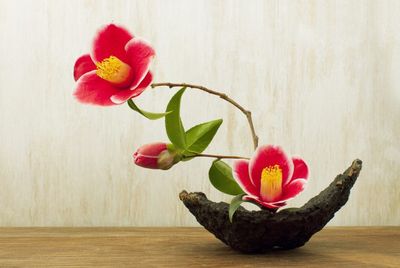Ikebana Information
What is ikebana? While it’s usually referred to as flower arranging, ikebana is really more about plant arranging. The goal with this practice isn’t to highlight blossoms and colors like it so often is in Western flower arranging. Instead, the focus is more on form and height, with special attention paid to the relationship between heaven, earth, and mankind.
Arranging Plants for Ikebana
Ikebana arrangements require at least three distinct parts called Shin, Soe, and Hikae. These parts are defined by height. Shin, the longest, should be at least one and a half times as long as it is wide. Ideally, it will be a long branch, maybe with flowers on the end. Shin represents heaven. Soe, the middle branch, represents earth and should be about three-fourths the length of Shin. Hikae, which represents mankind, should be about three-fourths the length of Soe.
How to Do Ikebana
Ikebana can be divided into two main styles of arrangements: Moribana (“piled up”) and Nagerie (“thrown in”). Moribana uses a wide, open vase and usually requires a frog or some other kind of support to keep the plants upright. Nagerie uses a tall, narrow vase. When arranging your ikebana plants, try to aim for asymmetry, simplicity, and lines that are pleasing to the eye. You can add more elements beyond your main three (these extras are called Jushi) but try to avoid overcrowding and keep the number of elements odd.
